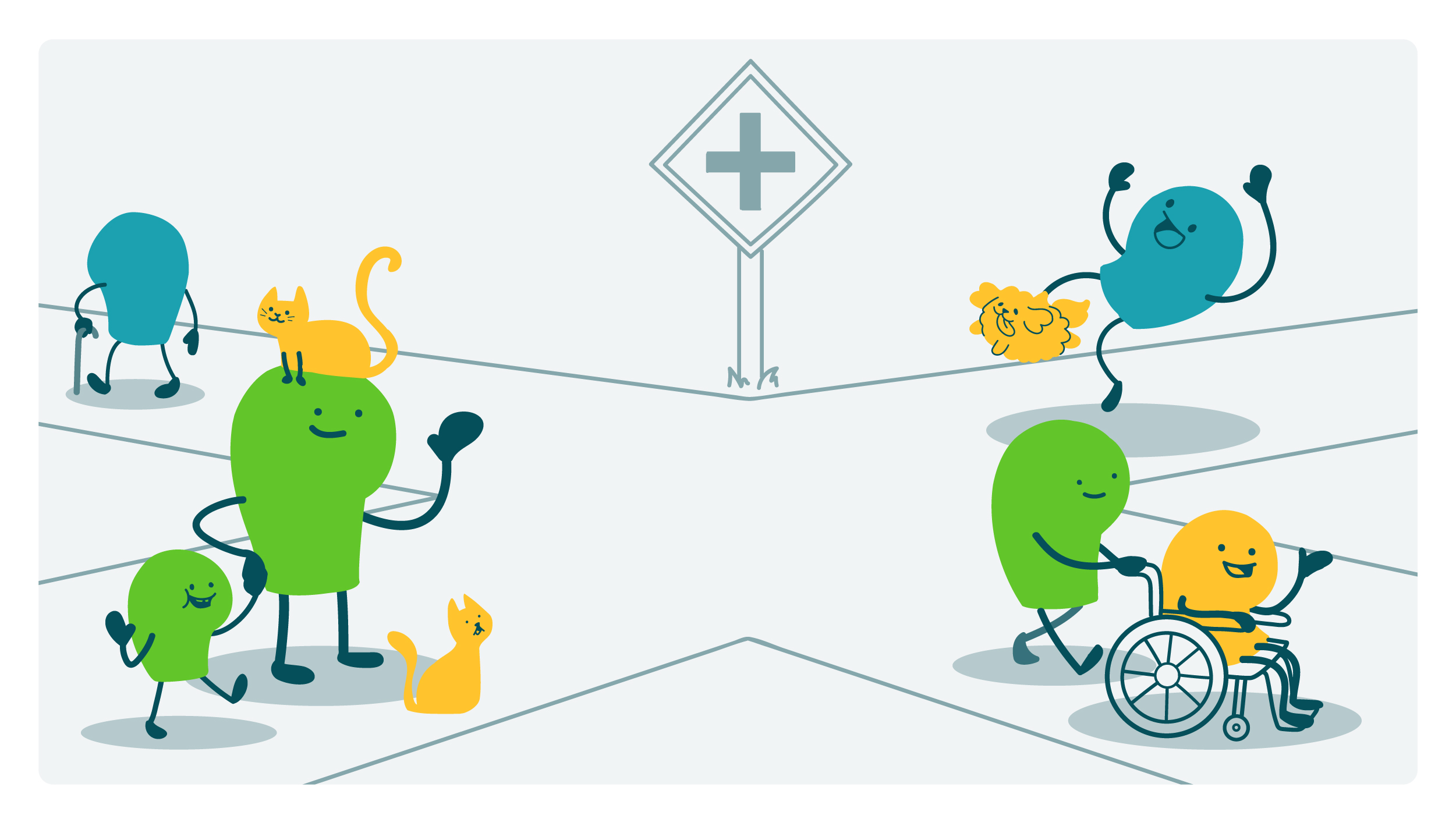
Here at We ❤️ Health Literacy HQ, we’re serious about focusing our messaging on the things our audience cares about. And as you may know, dear readers, using audience segmentation is a great way to do just that. When you segment your audience, you narrow it down — often using factors like race and ethnicity, age, gender, income level, or geographic location. But something that even the best-meaning public health professionals often overlook is the complexities that exist within an audience segment. That’s where intersectionality comes in.
The term “intersectionality” was conceived in the late ‘80s by civil rights advocate and scholar Kimberlé Crenshaw to account for the specific, intersectional oppression of Black women due to their gender and their race. Use of the term today varies a bit, but in public health it generally comes up in the context of health equity and refers to recognizing the combined effect of having multiple identities based on social factors (e.g., race and ethnicity, class, religion, gender identity, sexual orientation) — and how that contributes to inequities.
As Crenshaw herself said when asked about the evolution of the term: “Intersectionality is a lens through which you can see where power comes and collides, where it interlocks and intersects. It’s not simply that there’s a race problem here, a gender problem here, and a class or LGBTQ problem there. Many times that framework erases what happens to people who are subject to all of these things.”
That’s exactly why it’s so important to account for overlap in people’s identities. While it’s certainly helpful to learn about and reflect on the collective experiences of a group — and identify ways to best engage and promote behavior change to that group — we have to avoid pushing a singular narrative onto everyone in our audience. In other words, we can’t assume that there’s a singular experience for all people in the group.
Unfortunately, it’s common to default to generalities about our audience — it’s why we often talk about “what works” to reach Black people or trans people or parents or people with disabilities. But in real life, we know that people don’t fit into neat boxes. Identity is messy — and Black trans people or parents with a disability deserve tailored, effective health info just like everyone else.
So how do you learn about the nuanced identity intersections of your audience members? Start by asking them in formative research! Focus groups, in-depth interviews, and online surveys are all great ways to learn about your audience and what matters to them. You can also ask your professional network or social circle if anyone would be willing to give you informal feedback. You may even be able to find advocacy orgs that focus on specific intersecting identities and could help you think through the distinct experiences and identities that exist within your audience.
However you decide to go about it, just remember to take a moment (preferably lots of moments!) to explore the intersections that exist within audience segments. When you do, you’ll improve your health materials — and better serve everyone in your audience.
The bottom line: Acknowledging and exploring your audience’s intersecting identities is key to developing effective health information for everyone — and that helps advance health equity.
Browse recent posts